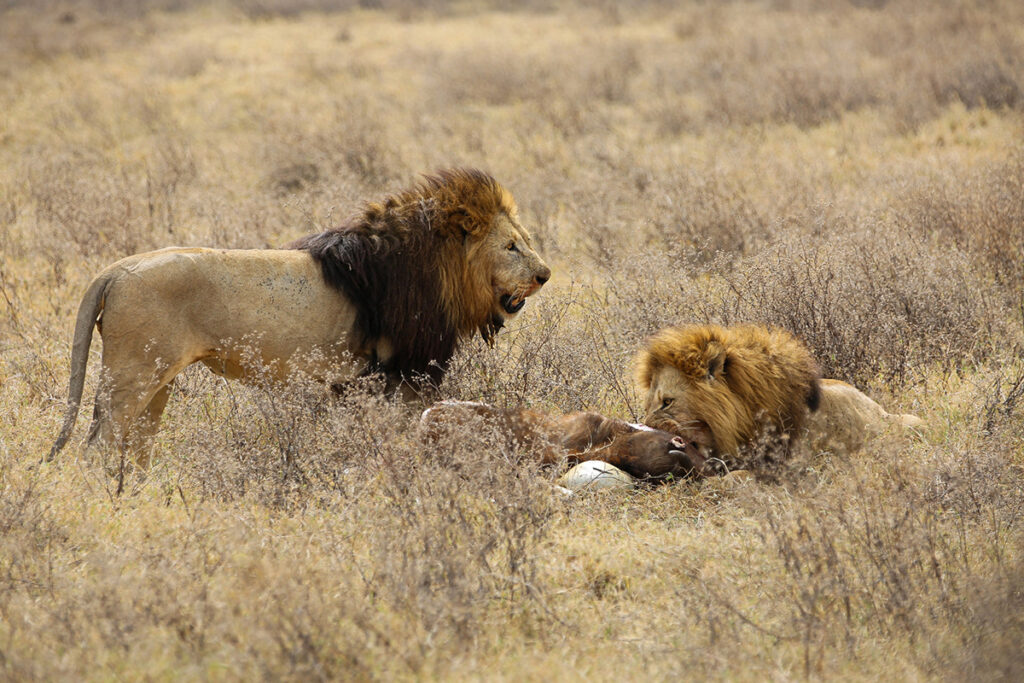The enduring legacy of the Hehe tribe is entwined with tales of ancient valor and grace. Their fierce resistance against colonization in the late 19th century is a testament to their indomitable spirit. Intriguingly, Hehe’s cultural practices have remained a beacon of their rich heritage, fostering a community sense unparalleled by many.
The history of the Hehe tribe is marked by significant milestones, notably their leadership under Chief Mkwawa, who valiantly opposed German rule. This formidable resistance is embedded in the Hehe identity, influencing their societal structures even today. Additionally, their cultural festivals, like the annual Ivunguvungu, are vivid displays of traditional music and dance, celebrating ancestral lineage and unity.

Hehe Tribe: History and Legacy
The Hehe tribe, situated in Tanzania, holds a fascinating history that dates back centuries. They are known for their remarkable resistance against colonization in the 19th century. Chief Mkwawa, a legendary leader, is celebrated for leading his people in battle against German forces. His legacy continues to be an inspiration for many within the tribe today. This rich historical backdrop sets the stage for understanding the essence of the Hehe’s cultural dynamics.
Life in the Hehe tribe was traditionally organized around a communal structure. Homes were built close together, fostering a spirit of togetherness and unity among the people. Their governance system, based on age-old customs, was an essential part of their society. Decision-making processes were communal, embodying respect for elders and shared wisdom. Such societal structures have been adapted over time but remain a crucial component of the tribe’s identity.
Cultural practices of the Hehe include unique rituals and vibrant festivals. According to the article, these events reflect their deep-rooted traditions. Major celebrations often feature traditional music, dance, and colorful attire. Storytelling remains a powerful way to pass on wisdom from one generation to another. Moreover, religious beliefs and rituals continue to harmonize community life.
In recent years, the Hehe tribe has embraced some modern adaptations while maintaining its traditions. For instance, educational initiatives have increased to support youth in navigating today’s world effectively. Agriculture remains an important aspect of their livelihood, with a focus on sustainable practices. Here is the post that elaborates on these developments. Such advancements showcase the tribe’s resilience and commitment to preserving its rich heritage.
GET TO KNOW ABOUT HEHE TRIBE FROM IRINGA TANZANIA|CHIEF MKWAWA
Early Beginnings and Migration Patterns of the Hehe Tribe
The origins of the Hehe tribe can be traced back to the Bantu-speaking peoples of Africa. These groups began migrating southward in search of fertile land and resources. As they moved, they established settlements in present-day Tanzania. This migration was a pivotal chapter in their history, shaping their cultural and social practices. The Hehe’s journey was not just about survival but also about building a new legacy.
The movement of the Hehe tribe was influenced by various environmental and social factors. As they traversed lush landscapes, they encountered other communities and integrated diverse customs. This integration played a role in defining their unique identity. Over time, they developed a profound connection to their land. This bond is visible in their farming practices and continued respect for nature.
The Hehe did not migrate alone; they charted their journey alongside many other tribes. This collective movement encouraged exchanges of ideas and technologies. Here is the post that expands on this fascinating blend of influences, contributing to the tribe’s evolving traditions. Such interactions enriched the Hehe culture, allowing it to be both distinct and multifaceted. Even today, these historical connections are evident in their community values.
Mapping the Hehe people’s migration patterns reveals a journey fueled by resilience and adaptability. Their travels took them through varied terrains, from rugged hills to rolling plains. They learned to thrive in different climates, cultivating crops that supported their communities. These experiences fortified their communal bonds and underscored their resourcefulness. The legacy of these migration paths endures within the stories passed down through generations.
The Role of Hehe Tribe in Resisting Colonial Invasion
During the late 19th century, the Hehe tribe emerged as formidable opponents against colonial invaders. Led by the fierce and strategic Chief Mkwawa, they engaged in significant battles with German forces. Mkwawa’s leadership was marked by both clever tactics and a deep understanding of geography. He inspired his people to defend their land fiercely. This resistance became a symbol of defiance and resilience.
One of the most notable battles occurred at the Battle of Lugalo in 1891. Here, the Hehe successfully ambushed the German troops, marking a significant victory. Their strategic use of terrain and surprise tactics left the colonizers taken aback. Despite their triumphs, the struggle was fraught with challenges. The unity and strength shown by the Hehe tribe during these times were remarkable.
However, the resistance was not solely reliant on warfare. The Hehe employed diplomatic strategies and maintained strong communication within their networks. These connections helped them gain allies and resources, vital for sustaining the fight. List of crucial elements that defined their resistance:
- Strategic leadership under Chief Mkwawa
- Effective use of local geography
- Tactical ambushes and surprise attacks
- Strong community support and organization
The legacy of the Hehe tribe’s resistance continues to inspire modern generations. Stories of their brave efforts are shared within the community, fostering a sense of pride and continuity. Their role in resisting colonial invasion has become an integral part of their cultural identity. This history offers valuable lessons on the power of leadership and unity. Through these narratives, the Hehe tribe honors their past and reinforces their cultural pride.
The Societal Structure and Governance of the Hehe Tribe
The Hehe tribe’s societal structure is deeply rooted in traditions passed down through generations. At the heart of their society is the family unit, which is the cornerstone of Hehe life. Families live in close-knit communities that emphasize cooperation and mutual support. This communal lifestyle fosters strong ties and collective responsibility. It is a vital part of their social identity.
Governance within the Hehe tribe is characterized by a hierarchical system led by a chief. The chief, often seen as both a leader and protector, plays a crucial role in the community. Beneath the chief are elders who counsel and aid in decision-making processes. Together, they work to maintain harmony and order within the tribe. This governance system ensures that wisdom and experience guide their way of life.
Community meetings are an important aspect of governance for the Hehe tribe. These gatherings provide a platform for discussing pressing issues and making collective decisions. Everyone has a voice, allowing for a democratic process that values each member’s input. This participatory approach helps in resolving conflicts and planning for the future. It underscores the tribe’s commitment to unity and shared leadership.
In terms of justice, the Hehe rely on traditional laws and customs. Disputes are addressed through mediation by respected elders. This method emphasizes reconciliation over punishment, promoting a peaceful society. Table of key governance components:
| Component | Role |
|---|---|
| Chief | Leader and protector |
| Elders | Counsel and advisors |
| Community Meetings | Collective decision-making |
The Hehe tribe’s governance and societal framework reflect their values of respect, collaboration, and wisdom. This system not only maintains order but also preserves their cultural heritage. It is a testament to their resilience and adaptability over time. By nurturing these principles, the Hehe continue to thrive as a cohesive and vibrant community. Their way of life remains a symbol of strength and cultural pride.
Cultural Practices: Rituals, Festivals, and Beliefs of the Hehe Tribe
The Hehe tribe is deeply connected to its cultural practices, which reflect their beliefs and way of life. Important rituals mark significant life events such as birth, marriage, and death. These ceremonies bring the community together, creating strong bonds among members. The rituals are vivid expressions of their identity, often involving music and dance. Through these acts, the Hehe celebrate and pass on their rich heritage.
Festivals hold a special place in the Hehe tribe, showcasing a colorful display of culture and tradition. One of the most celebrated festivals is the annual “Ivunguvungu,” which features traditional dance and music. It is a time of joy and togetherness, where stories of ancestors are retold. The festival serves as a reminder of their strength and unity. Such events reinforce community spirit and cultural pride.
Belief systems within the Hehe tribe are rooted in reverence for ancestors and the spiritual world. They believe in the presence of spirits who guide and protect them. Rituals to honor these spirits are conducted regularly. Ceremonies often include offerings to maintain harmony and balance. This spiritual connection provides a foundation for their way of life.
The Hehe use art and storytelling as a means to document their beliefs and customs. These cultural forms preserve history and teach younger generations about their roots. Traditional crafts, such as beadwork and pottery, are also significant. They reflect the tribe’s creativity and attention to detail. These artifacts are not only beautiful but also hold cultural significance.
Food plays a central role in Hehe traditions, with meals often used to unite families and communities. Feasting during festivals and rituals is common. Traditional dishes include ingredients gathered from their surroundings. This practice shows their connection to nature and the land. Through these culinary traditions, the Hehe maintain an unbroken connection to their past.
Modern Hehe Tribe: Changes and Adaptations Over Time
The Hehe tribe has undergone significant transformations in recent decades, adapting to a changing world while preserving their heritage. Education has become a priority, with efforts to provide access to modern schooling. Many young Hehe now attend universities, gaining knowledge and skills to contribute to their communities. This shift has brought new opportunities. However, it also invites the challenge of balancing tradition with modernity.
Agriculture remains a cornerstone of Hehe life, but methods have evolved. Modern farming techniques are being adopted to increase efficiency and sustainability. Introduction of new crops and better irrigation systems has led to improved food security. Despite these advancements, traditional farming practices are still honored. This blend of old and new ensures the community remains resilient.
The influence of technology is steadily making its mark on the Hehe tribe. Mobile phones and the internet connect them to the wider world. This connectivity fosters new business ventures and educational opportunities. Additionally, it helps in preserving and sharing their culture digitally. Social media platforms have become a venue for showcasing Hehe traditions and crafts.
Healthcare has improved, thanks in part to modern facilities and greater awareness. Traditional medicine is still valued and practiced, offering holistic approaches to health. The Hehe community embraces a dual approach, combining modern and traditional health practices. This integration ensures comprehensive care for their people. Training local health workers has also been essential.
Economic activities have diversified, including small businesses and tourism. The Hehe are increasingly engaging in markets beyond their region. Handicrafts and cultural tours attract visitors, providing a source of income. These economic changes support development within the tribe. They also promote cultural exchange and understanding with the global community.
Environmental conservation has taken on new importance for the Hehe tribe. Community-led initiatives focus on protecting local forests and wildlife. Sustainable practices are encouraged to maintain their natural resources. Such efforts reflect a deep respect for their environment. These conservation measures ensure future generations can thrive.

Frequently Asked Questions
Discover more about the Hehe tribe through these engaging questions and answers. Learn about their history, culture, and modern adaptations.
1. Who was Chief Mkwawa and why is he significant to the Hehe tribe?
Chief Mkwawa was a renowned leader of the Hehe tribe in the late 19th century. He is famous for leading his people in fierce resistance against German colonial forces, particularly during the Battle of Lugalo in 1891. His leadership and tactics were instrumental in preserving the autonomy and culture of the Hehe tribe during a tumultuous period.
Mkwawa’s legacy continues to inspire the Hehe people today, symbolizing pride and resilience. His story is passed down through generations as a reminder of their strength and determination. Monuments and historical sites dedicated to him are visited by both the Hehe and those interested in Tanzanian history.
2. What are the primary agricultural practices of the Hehe tribe?
Agriculture has always been central to the Hehe tribe’s way of life. Their traditional farming practices include crop rotation and the use of natural fertilizers, which help maintain soil fertility. Crops such as maize, beans, and yams are staples, grown using methods passed down through generations.
In recent years, the Hehe have adapted by integrating modern agricultural techniques to increase efficiency and sustainability. These include the introduction of irrigation systems and improved seed varieties. Despite these changes, they continue to honor traditional methods, blending the old with the new to ensure food security and sustainable farming.
3. How does the Hehe tribe maintain their cultural traditions in the modern world?
The Hehe tribe maintains their cultural traditions through various means, including festivals, rituals, and storytelling. Annual events like the Ivunguvungu festival are key to preserving their heritage, offering opportunities to showcase traditional music, dance, and attire. These celebrations foster a sense of community and continuity.
Additionally, modern technology plays a role in preserving and sharing Hehe culture. Social media and digital platforms allow them to document and disseminate their traditions to a wider audience. Educational programs within the community also ensure that younger generations learn and appreciate their cultural history.
4. What role do elders play in the Hehe community?
Elders hold a respected and pivotal role in the Hehe community. They are seen as custodians of wisdom and tradition, guiding decisions and mediating conflicts. Their counsel is vital in maintaining harmony and ensuring that cultural practices are upheld.
Community meetings often involve elders who provide input and advice on important matters. Their involvement ensures that the Hehe tribe’s governance is balanced with historical knowledge and cultural values. Through storytelling and teaching, elders pass down essential life lessons and cultural knowledge to the younger members.
5. How has the Hehe tribe contributed to Tanzanian heritage and identity?
The Hehe tribe has significantly contributed to Tanzanian heritage through their rich history and cultural practices. Their resistance against colonial invasion is a proud part of Tanzania’s national history, symbolizing resilience and unity. Cultural elements like their music, dance, and festivals are celebrated as part of the country’s diverse cultural landscape.
Furthermore, the Hehe’s sustainable agricultural practices and environmental conservation efforts serve as models for other communities. By preserving their traditions and adapting to modern changes, the Hehe tribe continues to enrich Tanzanian identity. Their ongoing contributions highlight the importance of cultural diversity and heritage in national unity.
THE HEHE PEOPLE
Conclusion
The Hehe tribe’s remarkable history and cultural practices serve as a profound example of resilience and adaptability. From their storied resistance against colonial forces to their rich traditions of festivals and storytelling, the Hehe have preserved their heritage with pride. Their contributions to Tanzanian identity and heritage highlight the importance of cultural diversity.
Modern adaptations in agriculture, education, and technology demonstrate the Hehe tribe’s ability to blend tradition with progress. By upholding their values and embracing necessary changes, the Hehe continue to thrive in a rapidly evolving world. Their ongoing journey is a testament to the enduring strength and unity of their community.



